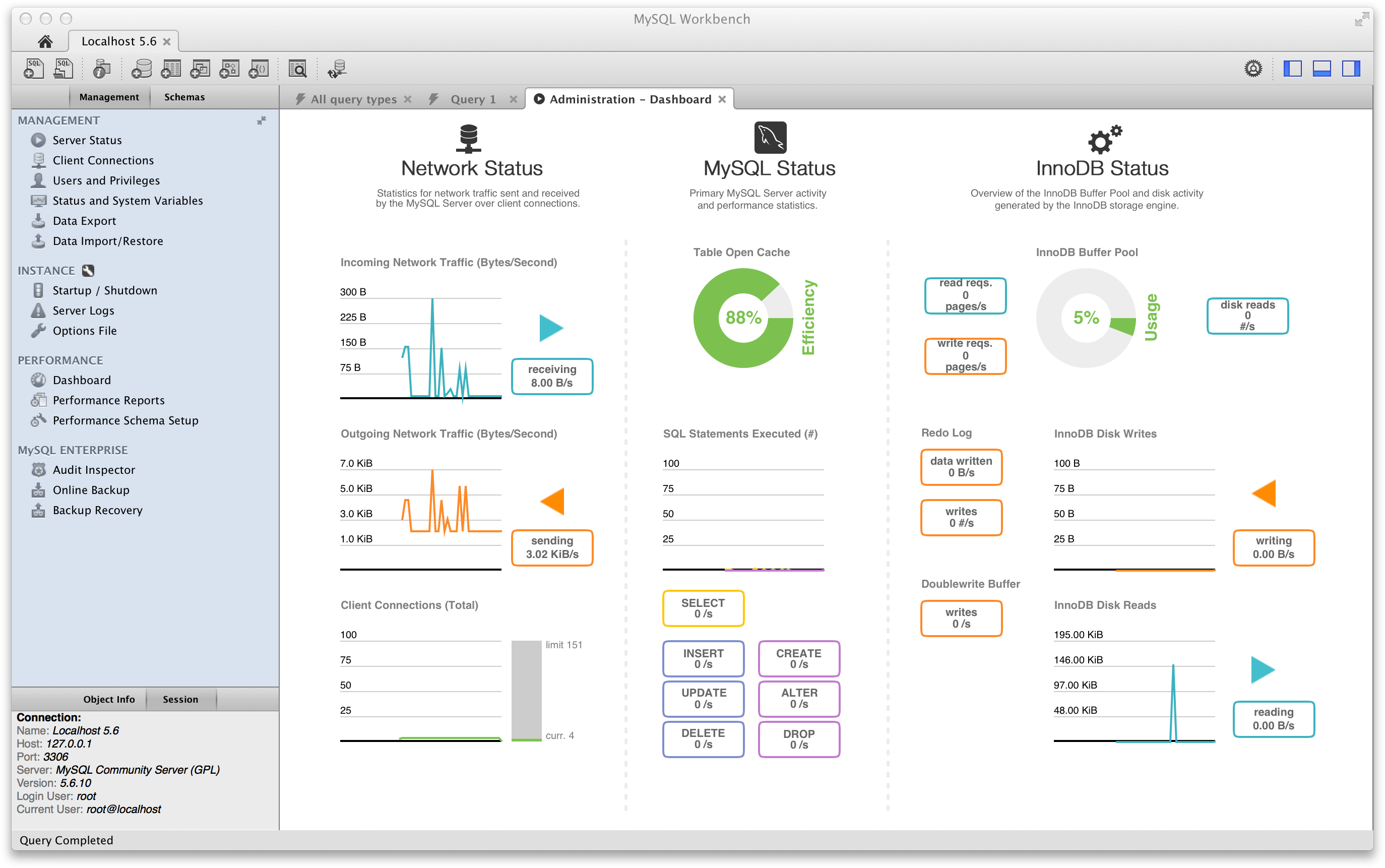Ms Sql For Mac Os
Recommend switching to Docker
Download Mysql For Mac Os X
I finally switched to using Docker for local development on macOS. While the following tutorial works for macOS Catalina, it has limitations. I recommend following my latest tutorial on installing Apache, MySQL, and PHP on macOS using Docker.
Navicat for MySQL. My Rec ommendation for Navicat for MySQL. My Recommendation for Navicat. The first step is to download MySQL server. Go to the MySQL web site and select the version that matches your version of Mac OS. Archive version. After the DMG file finishes downloading click on it to open. Then open the installer inside and follow the installation steps.
Note: This post assumes you followed installing Apache, PHP, and MySQL on Mac OS X Mojave and have since upgraded to macOS Catalina. If you did not follow the original post, you should follow installing Apache, PHP, and MySQL on macOS Catalina.
When Mac OS X upgrades it overwrites previous configuration files. However, before doing so it will make backups. For Catalina the original versions may have a suffix of mojave or be copied to a backup folder on the Desktop. Most of the time, configuring your system after updating Mac OS X is simply a matter of comparing the new and old configurations.
This post will look at the differences in Apache, PHP, and MySQL between Mac OS X Mojave and macOS Catalina.
Updating Apache
Mac OS X Mojave and macOS Catalina both come with Apache pre-installed. As noted above, your Apache configuration file is overwritten me when you upgrade to macOS Catalina.
There were a few differences in the configuration files. However, since both Mojave and Catalina run Apache 2.4, you could simply backup the configuration file from Catalina and overwrite it with your Mojave version.
Apache For Mac
However, I encourage you to stay up-to-date. As such, you should take the time to update Catalina's Apache configuration. First, create a backup and compare the two configuration files for differences.

Now edit the Apache configuration. Feel free to use a different editor if you are not familiar with vi.
Uncomment the following line (remove #):
In addition, uncomment or add any lines you noticed from the diff above that may be needed. For example, I uncommented the following lines:
Finally, I cleaned up some of the backups that were created during the macOS Catalina upgrade. This will help avoid confusion in the future.
Note: These files were not changed between versions. However, if you changed them, you should compare the files before running the commands.
Restart Apache:
Updating PHP
Mac OS X Mojave came with PHP version 7.1 pre-installed. This PHP version has reached its end of life. macOS Catalina comes with PHP 7.3 pre-installed. If you added any extensions to PHP you will need to recompile them.
Also, if you changed the core PHP INI file it will have been overwritten when upgrading to macOS Catalina. You can compare the two files by running the following command:
Note: Your original file may note be named something else. You can see which PHP core files exist by running ls /etc/php.ini*.
I would encourage you not to change the PHP INI file directly. Instead, you should overwrite PHP configurations in a custom PHP INI file. This will prevent Mac OS X upgrades from overwriting your PHP configuration in the future. To determine the right path to add your custom PHP INI, run the following command:
Note: It appears Catalina does not include the PHP Zip extension. This is a popular extension used by many packages. This was one of the reasons I switched to using Docker.
Updating MySQL
MySQL is not pre-installed with Mac OS X. It is something you downloaded when following the original post. As such, the macOS Catalina upgrade should not have changed your MySQL configuration.
Find this interesting? Let's continue the conversation on Twitter.
MySQL Workbench is a unified visual tool for database architects, developers, and DBAs. MySQL Workbench provides data modeling, SQL development, and comprehensive administration tools for server configuration, user administration, backup, and much more. MySQL Workbench is available on Windows, Linux and Mac OS X.
MySQL Workbench Home
View Screenshot:
Windows, Linux, OS X
Visual Database Design
View Screenshot:
Windows, Linux, OS X
Performance Dashboard
View Screenshot:
Windows, Linux, OS X
Design
MySQL Workbench enables a DBA, developer, or data architect to visually design, model, generate, and manage databases. It includes everything a data modeler needs for creating complex ER models, forward and reverse engineering, and also delivers key features for performing difficult change management and documentation tasks that normally require much time and effort.
Learn More »
Develop
MySQL Workbench delivers visual tools for creating, executing, and optimizing SQL queries. The SQL Editor provides color syntax highlighting, auto-complete, reuse of SQL snippets, and execution history of SQL. The Database Connections Panel enables developers to easily manage standard database connections, including MySQL Fabric. The Object Browser provides instant access to database schema and objects.
Learn more »
Administer
MySQL Workbench provides a visual console to easily administer MySQL environments and gain better visibility into databases. Developers and DBAs can use the visual tools for configuring servers, administering users, performing backup and recovery, inspecting audit data, and viewing database health.
Learn more »
Visual Performance Dashboard

MySQL Workbench provides a suite of tools to improve the performance of MySQL applications. DBAs can quickly view key performance indicators using the Performance Dashboard. Performance Reports provide easy identification and access to IO hotspots, high cost SQL statements, and more. Plus, with 1 click, developers can see where to optimize their query with the improved and easy to use Visual Explain Plan.
Learn More »
Database Migration
MySQL Workbench now provides a complete, easy to use solution for migrating Microsoft SQL Server, Microsoft Access, Sybase ASE, PostreSQL, and other RDBMS tables, objects and data to MySQL. Developers and DBAs can quickly and easily convert existing applications to run on MySQL both on Windows and other platforms. Migration also supports migrating from earlier versions of MySQL to the latest releases.
Learn more »
Additional Resources
